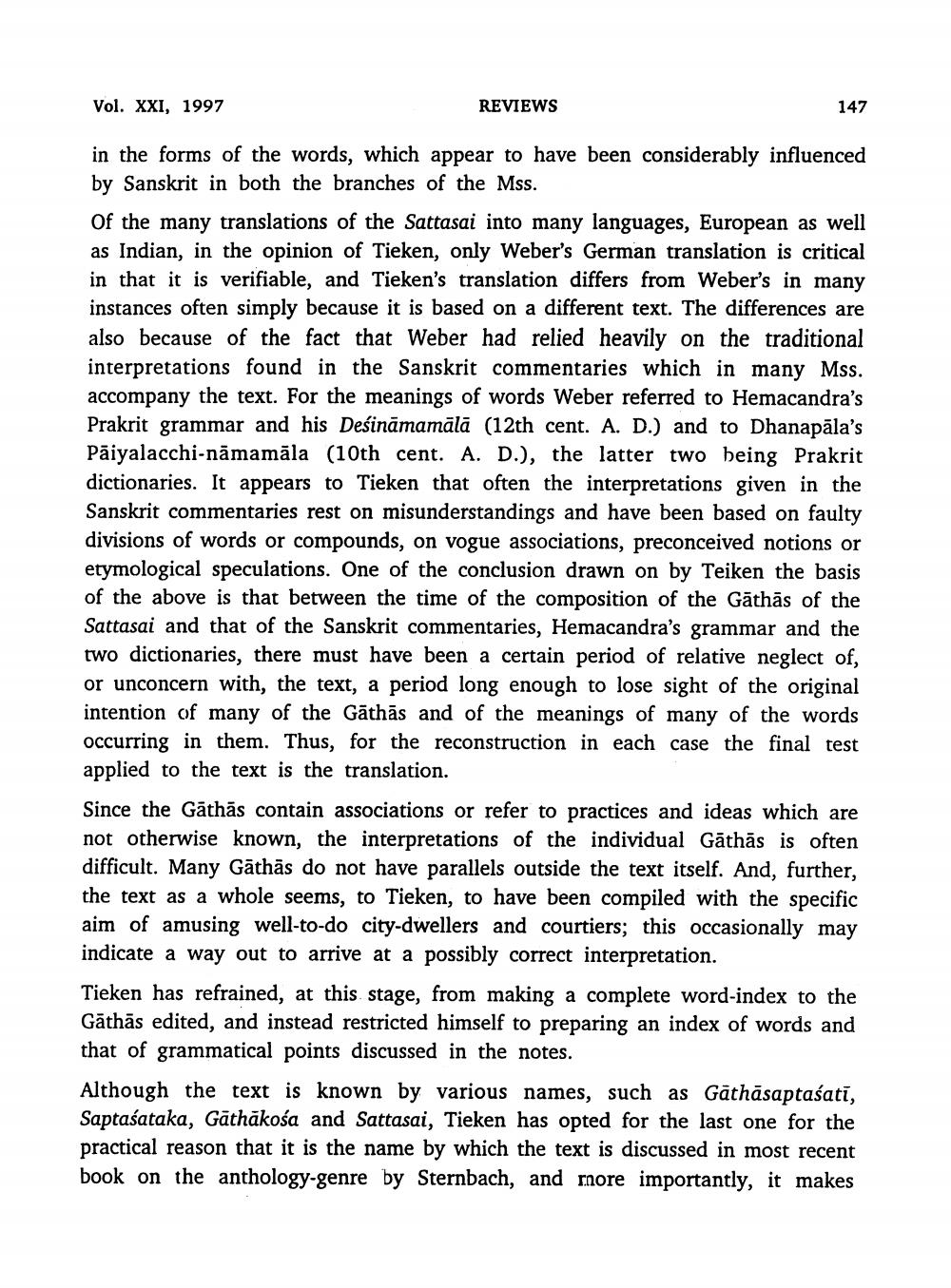________________
Vol. XXI, 1997
REVIEWS
147
in the forms of the words, which appear to have been considerably influenced by Sanskrit in both the branches of the Mss.
Of the many translations of the Sattasai into many languages, European as well
an, in the opinion of Tieken, only Weber's German translation is critical in that it is verifiable, and Tieken's translation differs from Weber's in many instances often simply because it is based on a different text. The differences are also because of the fact that Weber had relied heavily on the traditional interpretations found in the Sanskrit commentaries which in many Mss. accompany the text. For the meanings of words Weber referred to Hemacandra's Prakrit grammar and his Deśināmamālā (12th cent. A. D.) and to Dhanapāla's Päiyalacchi-nāmamāla (10th cent. A. D.), the latter two being Prakrit dictionaries. It appears to Tieken that often the interpretations given in the Sanskrit commentaries rest on misunderstandings and have been based on faulty divisions of words or compounds, on vogue associations, preconceived notions or etymological speculations. One of the conclusion drawn on by Teiken the basis of the above is that between the time of the composition of the Gāthās of the Sattasai and that of the Sanskrit commentaries, Hemacandra's grammar and the two dictionaries, there must have been a certain period of relative neglect of, or unconcern with, the text, a period long enough to lose sight of the original intention of many of the Gāthās and of the meanings of many of the words occurring in them. Thus, for the reconstruction in each case the final test applied to the text is the translation. Since the Gāthās contain associations or refer to practices and ideas which are not otherwise known, the interpretations of the individual Gāthās is often difficult. Many Gāthās do not have parallels outside the text itself. And, further, the text as a whole seems to Tieken, to have been compiled with the specific aim of amusing well-to-do city-dwellers and courtiers; this occasionally may indicate a way out to arrive at a possibly correct interpretation.
Tieken has refrained, at this stage, from making a complete word-index to the Gāthās edited, and instead restricted himself to preparing an index of words and that of grammatical points discussed in the notes. Although the text is known by various names, such as Gāthāsaptašati, Saptaśataka, Gathākośa and Sattasai, Tieken has opted for the last one for the practical reason that it is the name by which the text is discussed in most recent book on the anthology-genre by Sternbach, and more importantly, it makes




